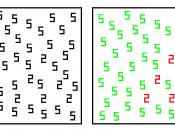Daniel Tammet is a rather unusual man. He can calculate immense sums in his head at lightning speed, with each number and sum having its own shape, color and texture. He speaks ten different languages, and has recited the number Pi to 22,514 decimal places. As a child, Daniel performed at a normal academic level, although socially he was completely oblivious to how one should act in public. He had no friends in school and had very slow social development, learning to make eye contact with others only at the age of 13. Daniel has AspergerÃÂs syndrome, which explains his behavior in social situations; savantism, which explains his mnemonic (memorization) skills and his penchant for language acquisition and mathematical prowess; and synesthesia, which causes him to perceive numbers and words as having specific shapes, colors, and textures.
Daniel is unique in that his combination of three different neurological anomalies ÃÂ savantism, synesthesia, and AspergerÃÂs Syndrome (a form of autism) ÃÂ is very rare.
With this in mind, does the combination of autism and synesthesia give rise to the savantÃÂs remarkable memory, or is that memory simply the result of mnemonic (memorization) devices? Using Daniel as a case study, researchers attempted to answer this question.
For people like Daniel who have synesthesia, the world can be a remarkable place. Synesthesia occurs when stimulation of one sense triggers perception of a different sense, even though that other sense is not receiving direct stimulation. For example, an individual with synesthesia would associate a certain smell with a shape or texture (olfactory with touch), and a specific sound with its own unique colors (auditory with visual). Brain scans of synesthetes show that when auditory centers of the brain are stimulated, the areas that perceive color are also stimulated. Genetic and neural theories about the...


![English: Daniel Tammet (born Daniel Paul Corney[1] on 31 January 1979) is a British writer with high-functioning autism and savant syndrome.](https://s.writework.com/uploads/3/34875/english-daniel-tammet-born-daniel-paul-corney-1-31-january-1-thumb.jpg)